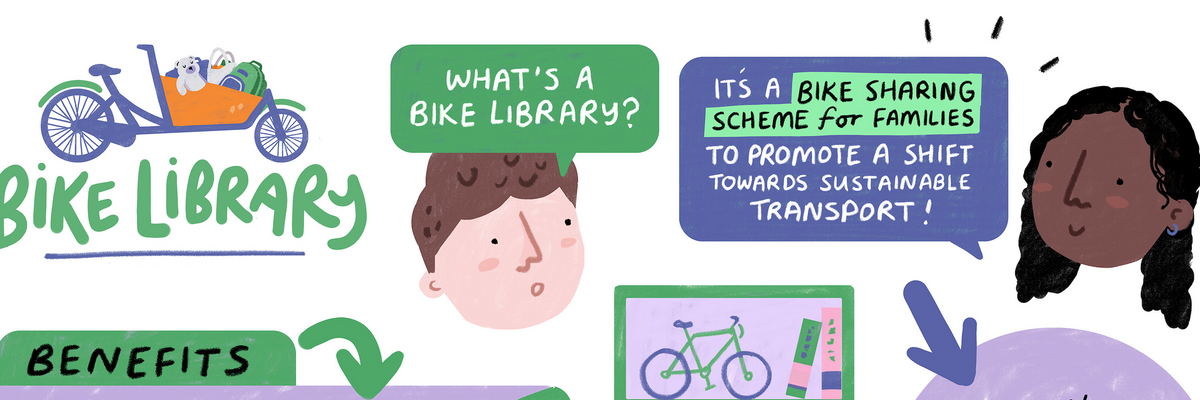Scope out your project and build your team
The first step is to get a better understanding of who is going to use the bikes in your neighbourhood. You could do this in the following ways:
- An online neighbourhood survey
- Interviews with local community members
After you've gained an understanding, start building your team & support for the project within your local community. This is how you will identify and establish community champions early on in the process. Here are some ideas for local community building:
- Focus group conversations
- Street chats
- Mass local communication campaigns through websites, social media, flyers for neighbours, stickers, posters, letters, etc. (consider your dissemination strategy after stakeholder mapping)
- Snowball from first participants recruited (e.g. through initial survey)
- Storytelling: videos, pictures, mind-maps
- Host a Bike Library launch event!
You should team up with people in your local community aiming to have at least 15-20 initial users of your bikes. Teaming up with a local school is a great idea, as schools are focal points in a local community.
Get in touch with a local supplier to order your bikes
Once you're clear on where your Bike Library will live, how it will operate and who will use it, it's time to secure your bikes.
In the resources section of this page, you'll find an example budget illustrating different bike costs. You will work with this budget once deciding which bikes to purchase, how many, whether you need insurance, and other considerations.
Depending on who you source your bikes from, this supplier might be able to provide support in advising on the most appropriate bikes you should purchase (ebikes, ecargo, long tail bikes, foldable bikes, etc.) for your Bike Library.
Depending on your budget available, the supplier will also be able to advise and offer bike insurance, bike repairs and maintenance and bike GPS tracking, which is mandatory to install into your bike fleet.
Remember when planning your budget, to consider all of the following elements:
- Bicycles
- GPS trackers
- Insurance
- Maintenance
- Storage
- Operating expenses
Note: if you're based in Ireland, we recommend you use Bleeper as your bike supplier!
Bleeper have several years of experience in running bike sharing schemes and have set up successful Bike Libraries in Dublin.
Refine your business model
A bike library needs a solid business model and plan to be self-sustainable.
There are operational costs which need to be covered in order to run the library in the long term. These are costs such as the maintenance of the bikes, the replacement of broken parts, the insurance (if needed), and other operating expenses.
How will you cover these costs once your Bike Library is running? Your business model and plan should answer that!
Set up your booking system
A Bike Library takes some effort to run, so you need to figure out the best ways to make this as effortless and smooth as possible - for you, your group and for those engaging with your Bike Library!
An online booking system will save a lot of time by eliminating several back and forth messages, emails and manual correspondence.
Research a variety of booking systems and figure out which one works best for you, your budget, your team and the end users of your Bike Library.
Begin to share the bikes with your local community/participating group and have fun!
Once all of the above is set, it's finally time to enjoy active mobility with your local community/participating group!
Think of tactics to sustain community engagement with your Bike Library and ways to keep people excited and curious. For example, hosting active mobility weeks and cycle buses are fun ways to spark engagement while simultaneously showcasing how bike use decreases one's carbon footprint!
In the 'resources' section of this page, you'll find some helpful documents explaining how to run some of these initiatives if they're of interest to you and your community.









 "Active travel increases health and wellbeing and contributes to the local environment, it helps communities to connect with their neighbourhoods and saves families commuting expenses."
- Francesco Pilla
"Active travel increases health and wellbeing and contributes to the local environment, it helps communities to connect with their neighbourhoods and saves families commuting expenses."
- Francesco Pilla
